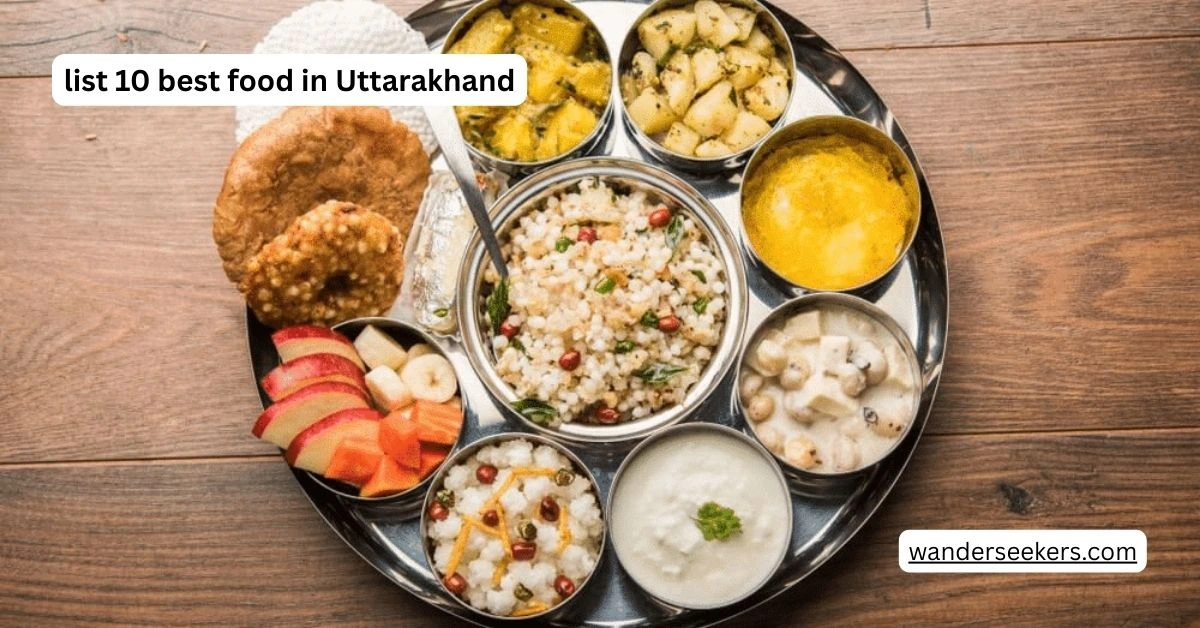Uttarakhand’s cuisine is deeply rooted in its mountainous terrain, rich biodiversity, and cultural traditions. The food here is known for its simplicity, nutritional value, and use of locally grown grains, lentils, and leafy greens. Here are 10 of the best foods from Uttarakhand, each with its unique taste and significance:
Table of Contents
1. Aloo Ke Gutke
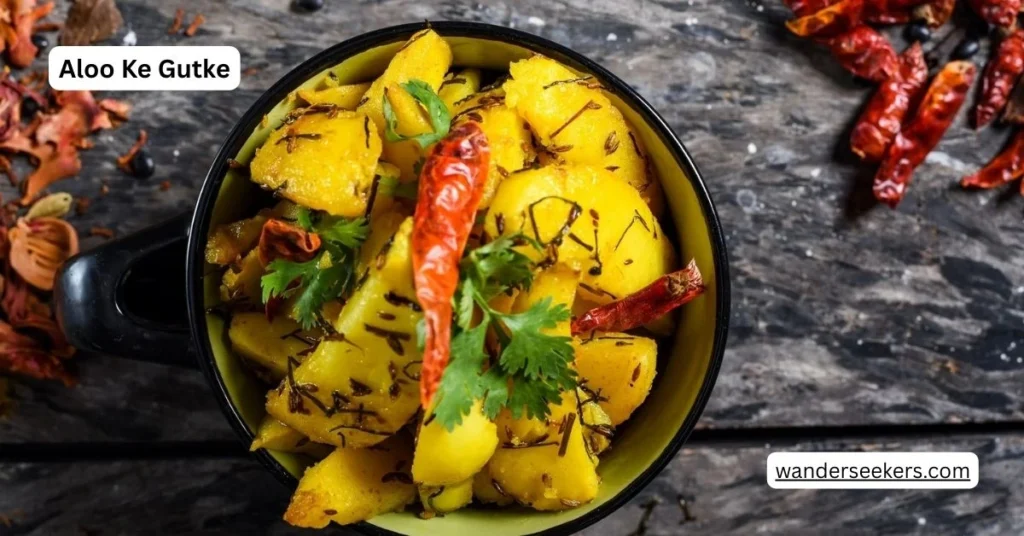
Aloo Ke Gutke is a traditional Kumaoni-style potato dish from Uttarakhand, known for its simple yet bold flavors. The name “Gutke” in the Kumaoni dialect means “pieces,” referring to the chunky potato cubes that are stir-fried with mustard oil, cumin seeds, dry red chilies, and basic spices like turmeric and red chili powder. This dish is unique because it does not use onion, garlic, or ginger, relying solely on the earthy taste of potatoes and aromatic spices. Aloo Ke Gutke is often served as a snack or side dish, paired with Pahadi Kheere Ka Raita (cucumber yogurt dip) or poori, making it a staple in local households and roadside eateries. The Pahadi variety of potatoes, known for their natural sweetness and quick cooking time, enhances the dish’s flavor. Whether enjoyed with tea on a chilly morning or as part of a festive meal, Aloo Ke Gutke remains a beloved comfort food in Uttarakhand.
2. Kafuli
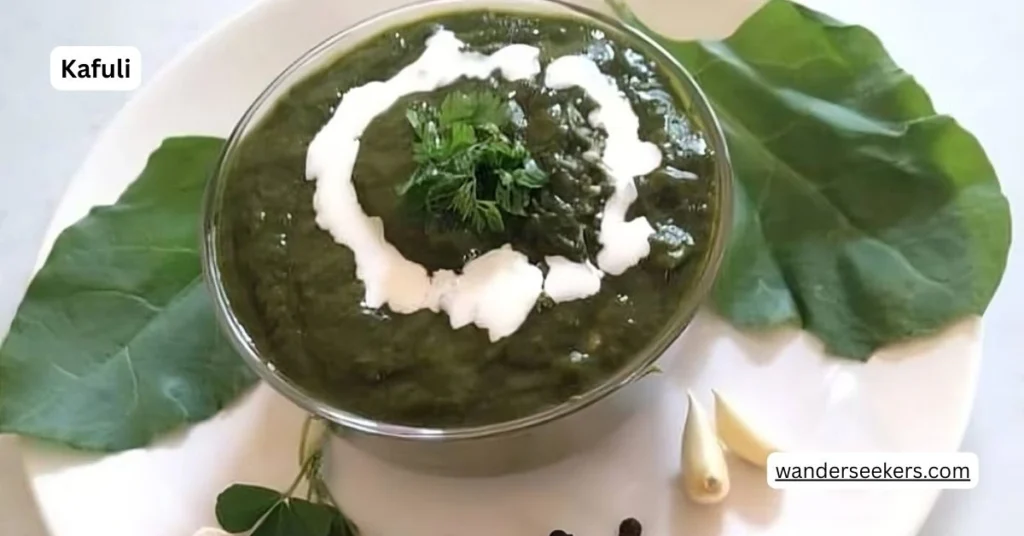
Kafuli is a traditional Garhwali dish from Uttarakhand, known for its nutritious and earthy flavors. It is a thick, green curry made from spinach and fenugreek leaves, slow-cooked with spices, yogurt, and rice flour, creating a rich and creamy texture. The dish is deeply rooted in Pahadi cuisine, where locals rely on leafy greens for sustenance, especially in the cold Himalayan climate. The preparation involves boiling the greens, blending them into a smooth puree, and simmering them with cumin, turmeric, garlic, and mustard oil, enhancing their depth of flavor. Kafuli is traditionally served with steamed rice or roti, making it a wholesome and comforting meal. Its high iron and vitamin content make it a favorite among health-conscious food lovers. Whether enjoyed in a village home or a city restaurant, Kafuli remains a symbol of Uttarakhand’s culinary heritage.
3. Bhang Ki Chutney
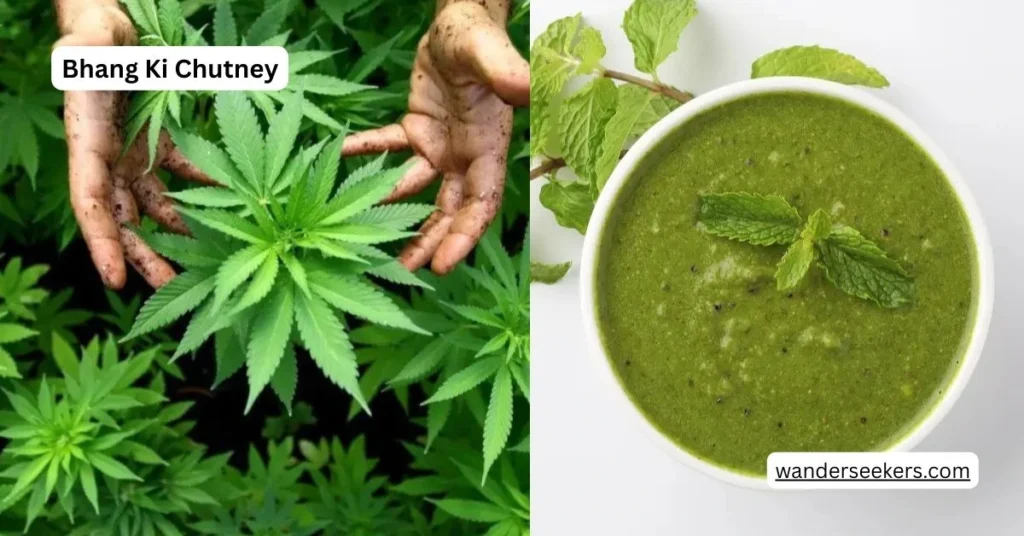
Bhang Ki Chutney is a unique and flavorful condiment from Uttarakhand, deeply rooted in Pahari cuisine. Made from hemp seeds (bhang), green chilies, garlic, cumin, and lemon juice, this chutney has a nutty, slightly tangy taste that enhances traditional meals. Despite its name, bhang seeds do not contain intoxicating properties, making this chutney completely safe to eat. The preparation involves roasting hemp seeds, grinding them with spices, and blending them into a smooth paste with lemon juice, creating a bold and aromatic dip. It is often served with dal, rice, or rotis, adding depth to simple dishes. Apart from its rich flavor, Bhang Ki Chutney is packed with omega-3 fatty acids, protein, and antioxidants, making it a nutritious addition to meals. Whether enjoyed in local homes or roadside dhabas, this chutney remains a beloved part of Uttarakhand’s culinary heritage.
4. Chainsoo
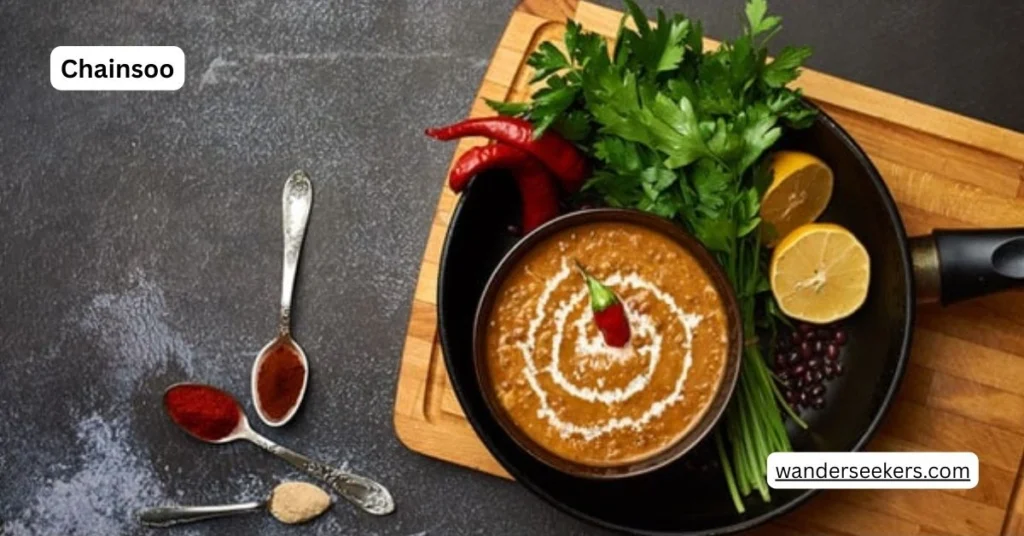
Chainsoo is a traditional Garhwali dish from Uttarakhand, known for its rich, earthy flavors and high protein content. Made from black gram (urad dal), this dish is unique because the lentils are dry-roasted before cooking, giving it a deep, nutty taste. The roasted lentils are then ground into a coarse powder and simmered with mustard oil, cumin seeds, garlic, turmeric, and green chilies, creating a thick, aromatic gravy. Chainsoo is often paired with steamed rice or roti, making it a wholesome and satisfying meal. The dish is not only delicious but also nutrient-dense, packed with fiber, protein, and essential minerals, making it a staple in Pahari households. Traditionally, it is cooked in iron utensils, which enhances its flavor and adds a rustic touch. Whether enjoyed in a village home or a city restaurant, Chainsoo remains a symbol of Uttarakhand’s culinary heritage.
5. Dubuk
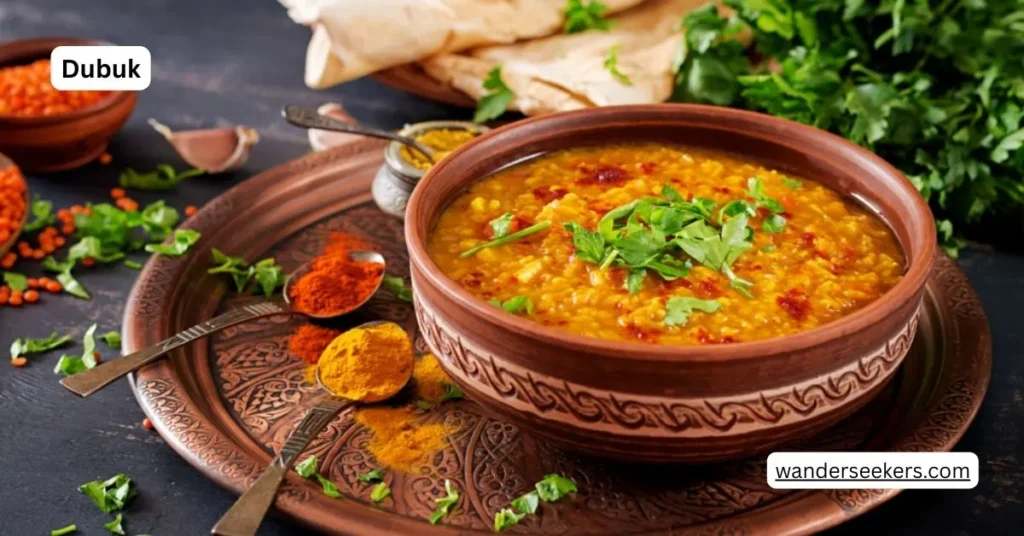
Dubuk is a traditional Garhwali dish from Uttarakhand, known for its simple yet hearty flavors. It is a lentil-based porridge, typically made with local pulses like gahat (horse gram) or bhatt (black soybean), slow-cooked to create a smooth, comforting texture. The preparation involves soaking the lentils overnight, grinding them into a paste, and simmering them with garlic, green chilies, turmeric, and mustard oil, enhancing their earthy taste. Dubuk is traditionally cooked in iron utensils, which not only adds depth to its flavor but also boosts its iron content, making it a nutritious meal. This dish is especially popular during winter, as it provides warmth and sustenance in the cold Himalayan climate. Dubuk is often served with steamed rice or rotis, accompanied by Bhang Ki Chutney, adding a tangy contrast to its rich, creamy consistency. Whether enjoyed in a village home or a city restaurant, Dubuk remains a symbol of Uttarakhand’s culinary heritage.
6. Jhangora Ki Kheer
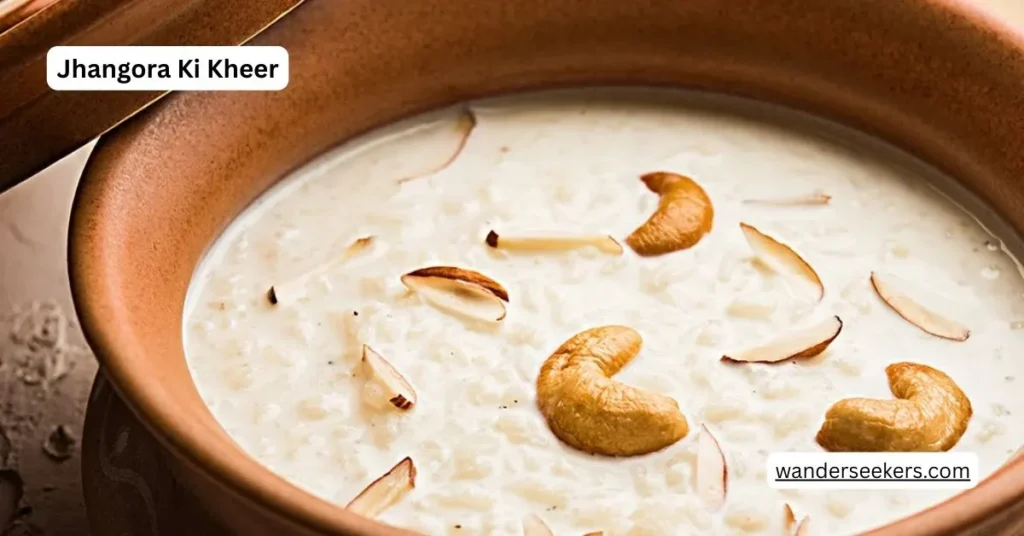
Jhangora Ki Kheer is a traditional sweet dish from Uttarakhand, made from barnyard millet (Jhangora), which is known for its nutritional benefits and rich texture. This dessert is a staple in Pahadi cuisine, often prepared during festivals, weddings, and special occasions. The preparation involves slow-cooking Jhangora in full-cream milk, allowing it to absorb the creamy richness while developing a mildly sweet flavor. It is then flavored with cardamom, sugar, and dry fruits like almonds, cashews, and raisins, enhancing its taste and texture. The dish is praised for being gluten-free, high in fiber, and packed with essential nutrients, making it both delicious and healthy. Traditionally, Jhangora Ki Kheer is served warm or chilled, garnished with extra nuts for added crunch. Whether enjoyed as a festive treat or a comforting dessert, it remains a beloved part of Uttarakhand’s culinary heritage.
7. Arsa
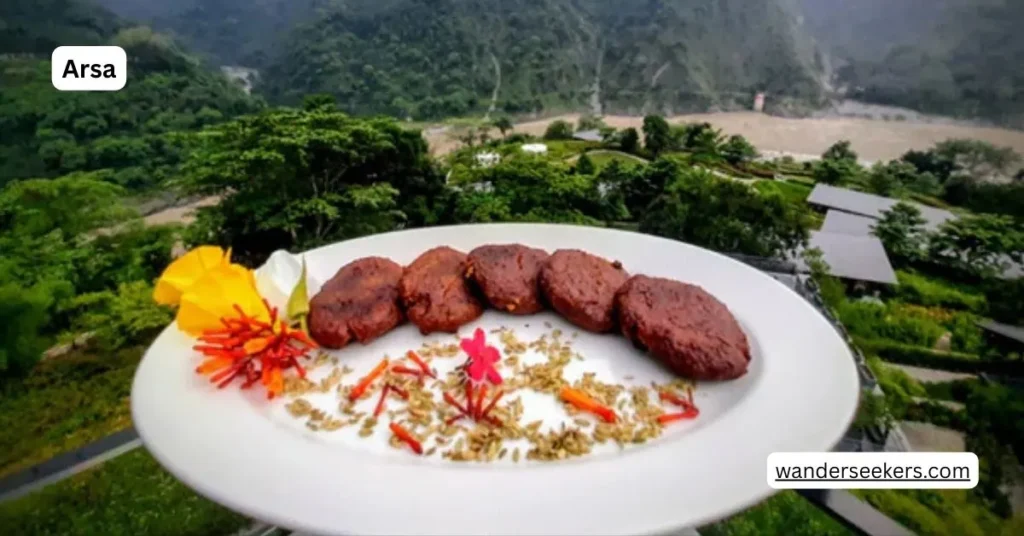
Arsa is a traditional sweet dish from Uttarakhand, often prepared during festivals, weddings, and special occasions. Made from rice flour, jaggery, and mustard oil, this dessert has a crispy exterior and a soft, chewy interior, making it a delightful treat. The preparation involves mixing rice flour with jaggery syrup, shaping the dough into small rounds, and deep-frying them in mustard oil, which gives Arsa its distinct flavor. The dish is known for its long shelf life, allowing it to be stored for weeks without losing its taste. Arsa is not just a dessert but a symbol of tradition and celebration, often shared among family and friends during special gatherings. Whether enjoyed with tea or as a festive offering, it remains a beloved part of Uttarakhand’s culinary heritage.
8. Singori
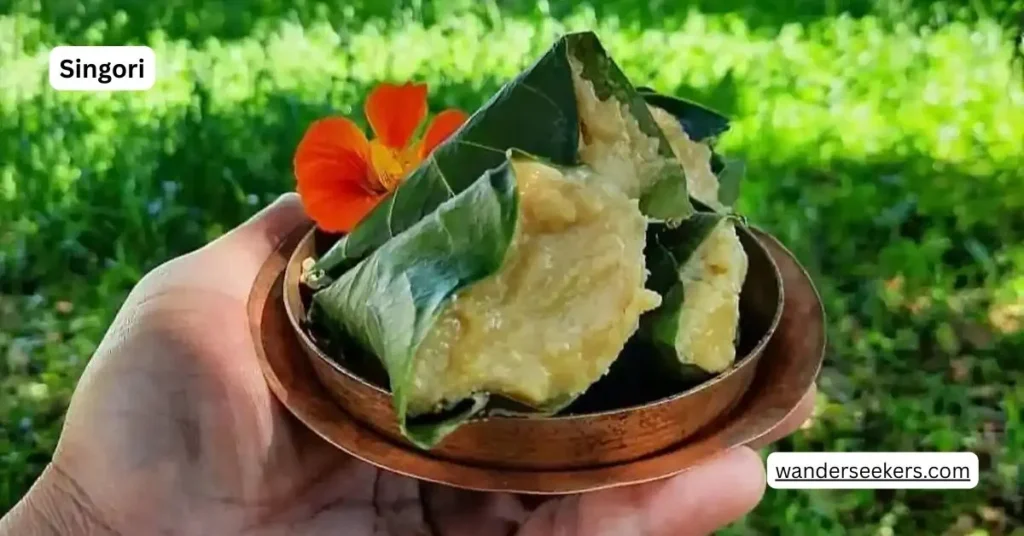
Singori is a traditional sweet delicacy from Uttarakhand, particularly popular in the Kumaon and Garhwal regions. Made from khoya (reduced milk solids), sugar, cardamom, and grated coconut, this dessert is unique because it is wrapped in Maalu leaves, which infuse it with a subtle, natural aroma. The preparation involves slow-cooking khoya, mixing it with sugar and coconut, and shaping it into small cones before wrapping them in the leaves. Singori is often enjoyed during festivals, weddings, and special occasions, symbolizing celebration and togetherness. Its rich, creamy texture and mildly sweet flavor make it a favorite among locals and visitors alike. Almora is one of the best places to experience this delicacy, where it is freshly prepared and sold in traditional sweet shops. Whether savored as a festive treat or a nostalgic indulgence, Singori remains a cherished part of Uttarakhand’s culinary heritage.
9. Bal Mithai
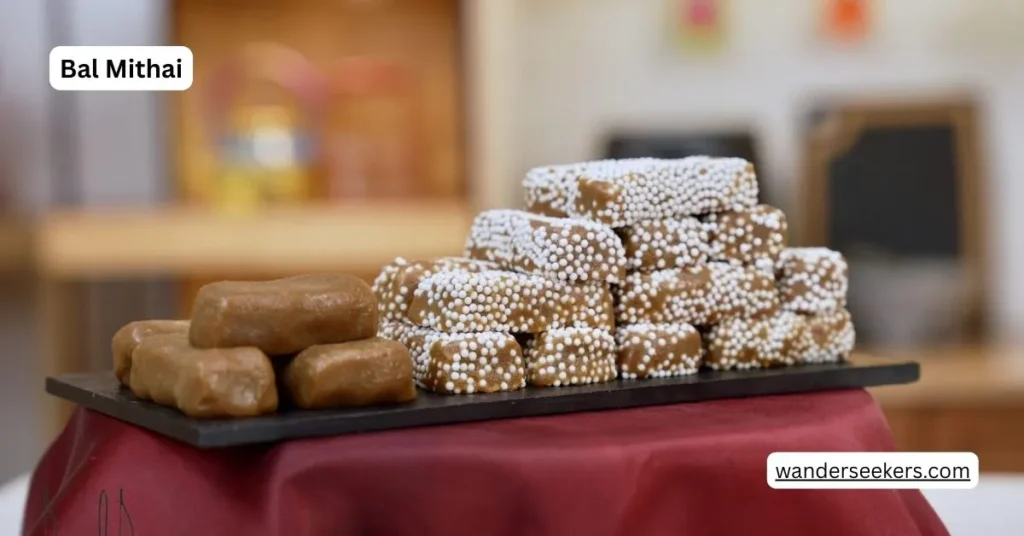
Bal Mithai is a beloved sweet delicacy from Uttarakhand, particularly famous in Almora and Nainital. This traditional dessert is made from roasted khoya (milk solids), which is slow-cooked with cane sugar until it turns a rich, deep brown color, resembling chocolate. The sweet is then coated with tiny white sugar balls, giving it a distinct texture and appearance. Bal Mithai has a fascinating history, believed to have originated in Lal Bazaar, Almora, in the early 20th century, where it was perfected by local halwais (sweet makers). Over time, it became a symbol of Kumaoni culture, often prepared during festivals, weddings, and special occasions. Its caramelized flavor and melt-in-the-mouth texture make it a favorite among locals and visitors alike. Whether enjoyed fresh from a traditional sweet shop or gifted as a souvenir, Bal Mithai remains an iconic treat that represents the rich culinary heritage of Uttarakhand.
10. Phaanu
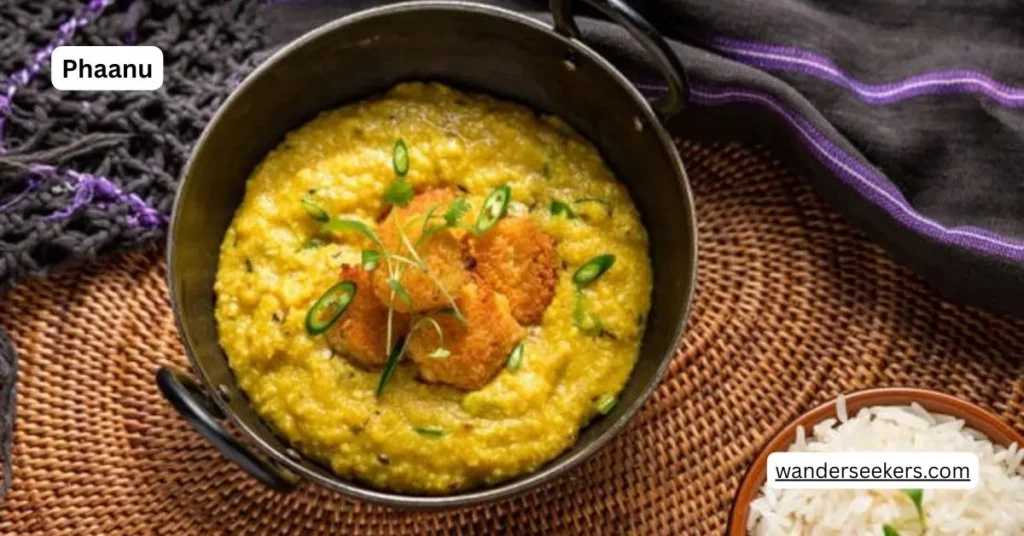
Phaanu is a traditional Garhwali dish from Uttarakhand, known for its rich, earthy flavors and high protein content. Made from a blend of lentils, typically Gahat (horse gram) or black gram, this dish is slow-cooked to create a thick, comforting curry. The preparation involves soaking the lentils overnight, grinding them into a coarse paste, and simmering them with mustard oil, garlic, turmeric, cumin, and green chilies, enhancing their depth of flavor. Phaanu is often served with steamed rice, making it a wholesome and satisfying meal. Traditionally, it is cooked in iron utensils, which not only adds a rustic touch but also boosts its iron content, making it a nutritious choice. This dish is especially popular in Pahadi households, where it provides warmth and sustenance in the cold Himalayan climate. Whether enjoyed in a village home or a city restaurant, Phaanu remains a symbol of Uttarakhand’s culinary heritage.
